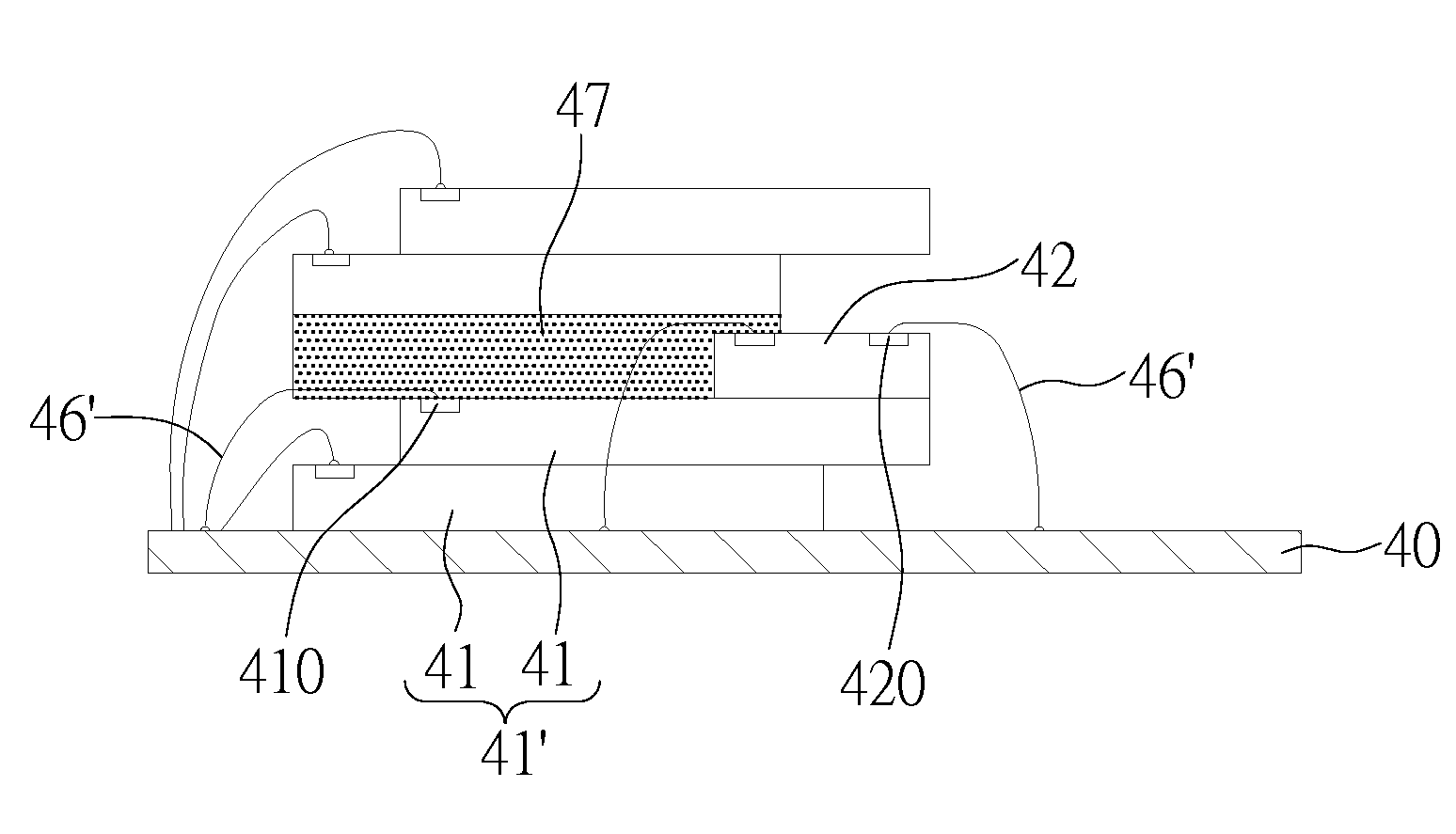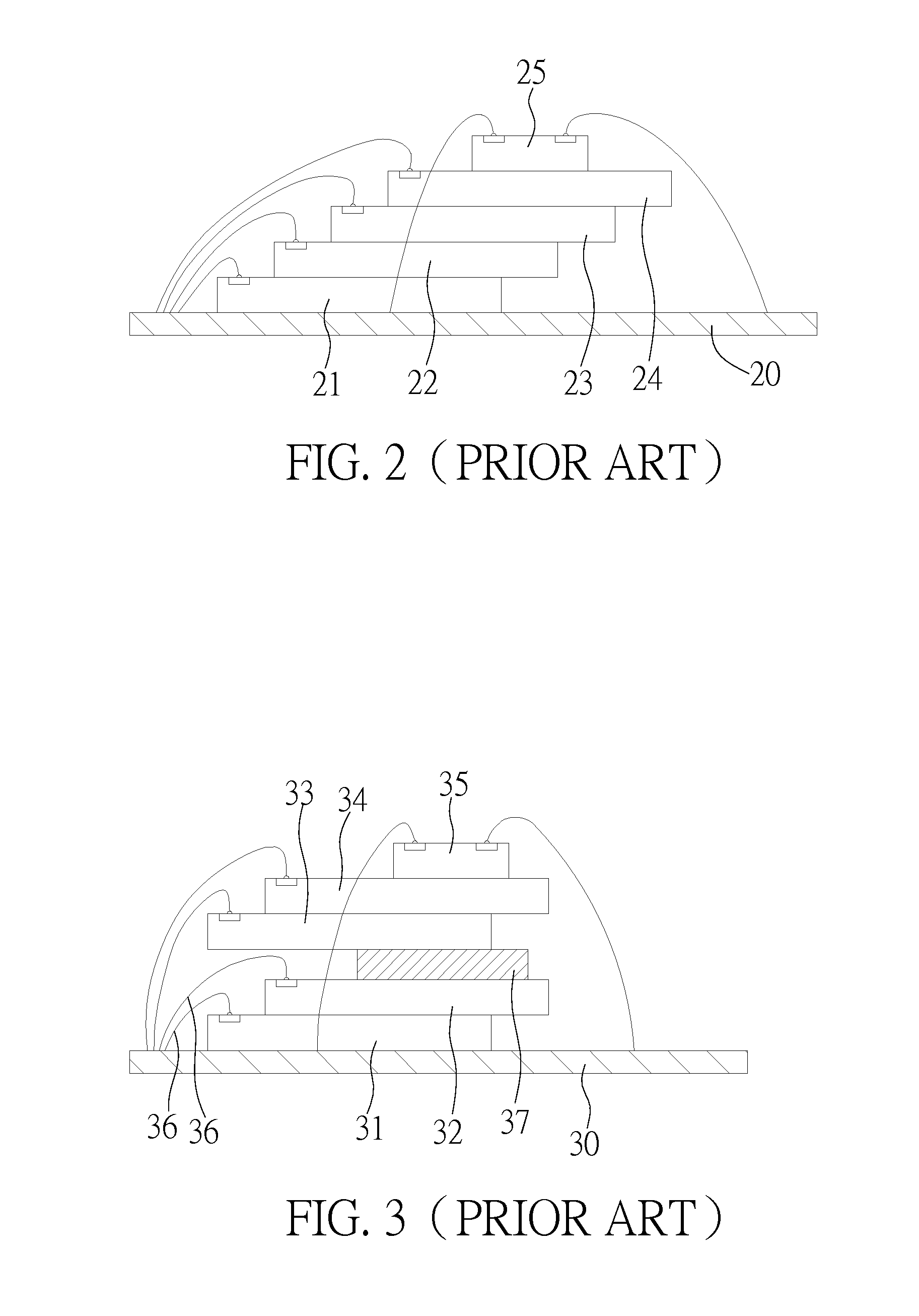Multi-chip stack structure and method for fabricating the same
a stack structure and stack technology, applied in the direction of semiconductor devices, semiconductor/solid-state device details, electrical equipment, etc., can solve the problems of memory chips going out of the packageable range, large package size, high package cost, etc., to avoid wire bonding difficulty and even short circuit problems, reduce the height of the entire structure, and save fabrication costs
- Summary
- Abstract
- Description
- Claims
- Application Information
AI Technical Summary
Benefits of technology
Problems solved by technology
Method used
Image
Examples
first embodiment
[0034]FIGS. 4A to 4D are sectional diagrams showing a multi-chip stack structure and method for fabricating the same according to a first embodiment of the present invention.
[0035]As shown in FIG. 4A, a chip carrier 40 is provided, a first chip group 41′ comprising a plurality of first chips 41 is disposed on the chip carrier 40 in a step-like manner, and a second chip 42 is disposed on the first chip on the top of the first chip group 41′, wherein the first and second chips 41, 42 are electrically connected to the chip carrier 40 through bonding wires 46.
[0036]The first chips 41 and the second chip 42 can be such as memory chips and a controller chip respectively. Planar size of the second chip 42 is smaller than that of the first chips 41, a plurality of bonding pads 410 is disposed at one side on a surface of each first chip 41 and a plurality of bonding pads 420 is disposed at least one side on a surface of the second chip 42 (the bonding pads 420 are disposed at several sides o...
second embodiment
[0043]FIG. 5 is a diagram showing a multi-chip stack structure and method for fabricating the same according to a second embodiment of the present invention. Different from the first embodiment, the present embodiment electrically connects the first chip on top of the first chip group and the second chip with the chip carrier through a reverse wire bonding method.
[0044]As shown in FIG. 5, a stud bump (not shown) is first formed on the bonding pads 410 of the first chip 41 on top of the first chip group 41′ and the bonding pads 420 of the second chip 42 by a ball bonding method. Then, the bonding wires 46 for electrically connecting the first chip 41 on top of the first chip group 41′, the second chip 42 with the chip carrier 40 have a ball bond formed to connect the chip carrier 40 and have a stitch bond formed to connect the stud bump. Thus, the arc height of the bonding wires electrically connecting the first and second chips 41, 42 with the chip carrier 40 is reduced. Thus, the t...
PUM
 Login to View More
Login to View More Abstract
Description
Claims
Application Information
 Login to View More
Login to View More - R&D
- Intellectual Property
- Life Sciences
- Materials
- Tech Scout
- Unparalleled Data Quality
- Higher Quality Content
- 60% Fewer Hallucinations
Browse by: Latest US Patents, China's latest patents, Technical Efficacy Thesaurus, Application Domain, Technology Topic, Popular Technical Reports.
© 2025 PatSnap. All rights reserved.Legal|Privacy policy|Modern Slavery Act Transparency Statement|Sitemap|About US| Contact US: help@patsnap.com



